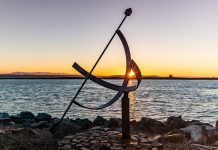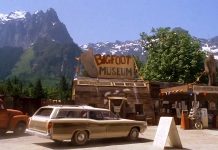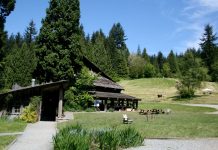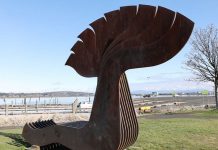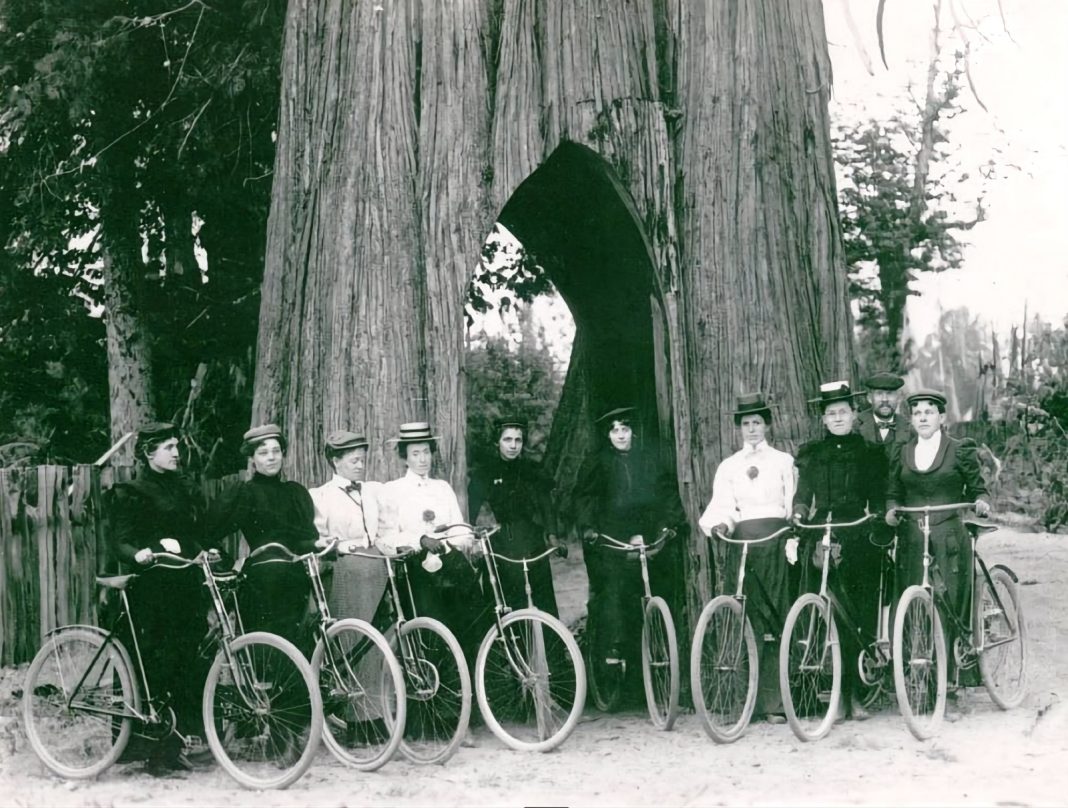Imagine stepping off a dusty wagon trail into a world unlike anything you’d ever known. This was the reality for the first settlers arriving in the Pacific Northwest as they surveyed this new land. Gone were Europe’s rolling hills and cultivated fields; they were no longer in the Great Plains, with views as far as the eyes could see. Instead, they stumbled upon a dense, primordial forest home to towering evergreens, massive trees with trunks stretching up to ten feet wide and climbing as high as 200 feet.
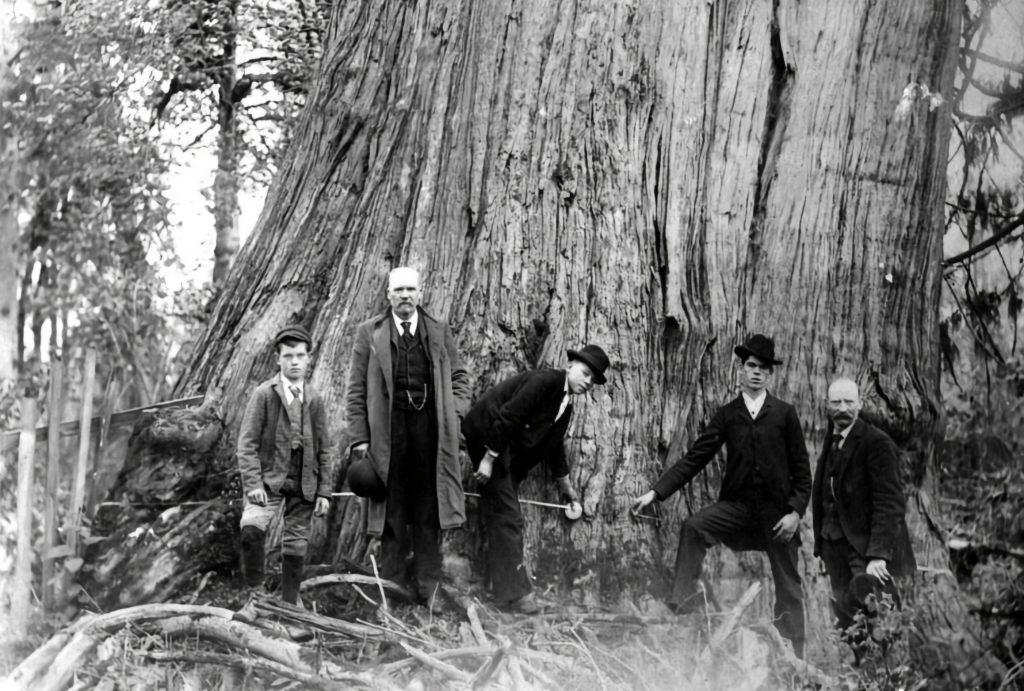
The sheer scale of these forests must have been overwhelming initially to settlers. Yet, as they acclimated to their new surroundings, these towering giants transformed from objects of wonder into valuable resources. Their massive trunks proved ideal for construction as they provided lumber for homes, barns, and other essential structures. Necessity truly is the mother of invention, and some enterprising souls even hollowed out a few of these giants to create a passage for their newfangled horseless carriages, the automobile. Snohomish, however, took it one step further with the legendary Snohomish Bicycle Tree.
A New Bicycle Craze Collides With an Old Cedar Tree to Create Snohomish Bicycle Tree
Towering over a rural spot about a mile south of Snohomish was an extremely girthsome old-growth cedar tree that had stood there for centuries. The giant tree presumably served as a milestone of sorts for early settlers, located at the junction of the Woodinville cutoff and the Cathcart and the Larimer’s Corners-Lowell roads, just yards east of today’s intersection of State Highway 9 and Marsh Road on Airport Way. Measuring a staggering 13 feet nine inches across, with a circumference exceeding 48 feet, the towering landmark was situated just on the edge of Abel Johnson’s property alongside the dirt wagon road that led northward into town.
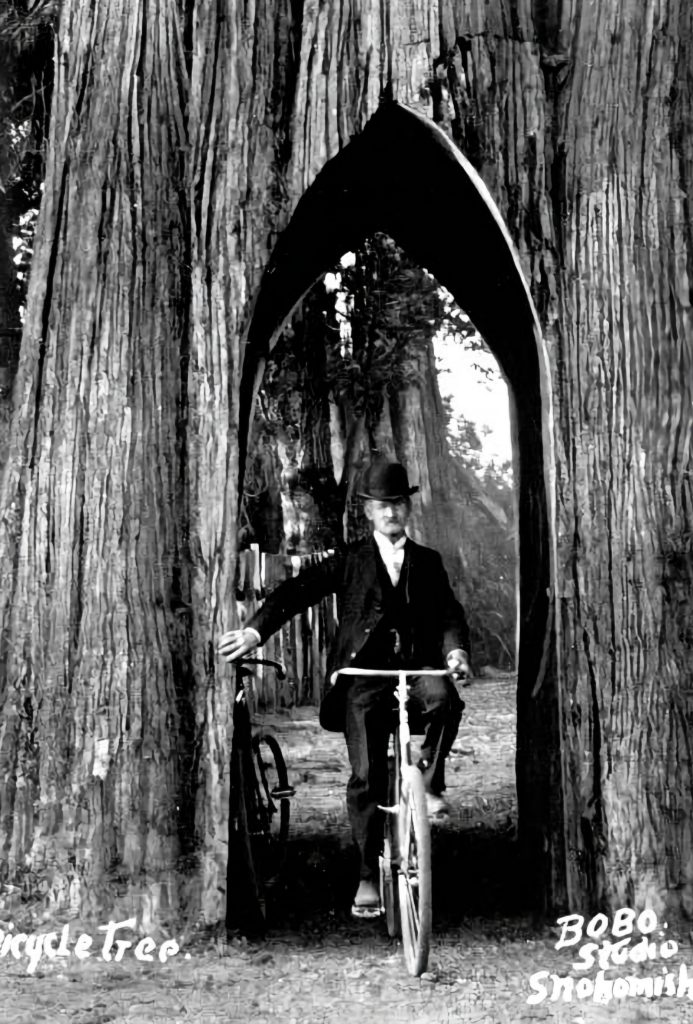
In the late 1800s, the new fad of bicycle riding swept across the nation as it gained in popularity, and Snohomish was no exception as the dirt road became a favorite cruising route. Around this time, Civil War veteran Davis “Lew” Paramore moved to the city in 1890, working as a druggist until retiring later in 1912. He went on to become President of the Snohomish Bicycle Club and is credited with leading the effort to make the tree an unmistakable destination along a new cinder-lined bike path that was built next to the road. It was Abel Johnson’s generous donation that made it all possible. He kindly deeded the patch of real estate with the large cedar tree to the club. Soon after, a logger named Milligan was hired to cut a five-foot wide by 12-foot high pathway through the massive trunk for only $15.
Gone But Not Forgotten: A Mighty Giant Topples
Despite transforming into a beloved cycling landmark, the Snohomish Bicycle Tree wasn’t invincible. In 1913, the first ominous crack appeared in its armor. That summer, an “electrical disturbance” descended upon Snohomish on the evening of August 22. A powerful bolt of lighting ended up shattering the top of the giant cedar, dividing the trunk at the top of the archway.
Though wounded, the Bicycle Tree survived for another decade-and-a-half, remaining a beloved magnet for locals and a draw for curious visitors on excursions as it persevered. Even when the rise of the automobile led to a decline in cycling, people would still often drive to it by car. Sadly, the same could not be said of the Bicycle Club, who by this time had gone out of existence, and the title on the property for the tree had reverted back to Mr. Johnson.
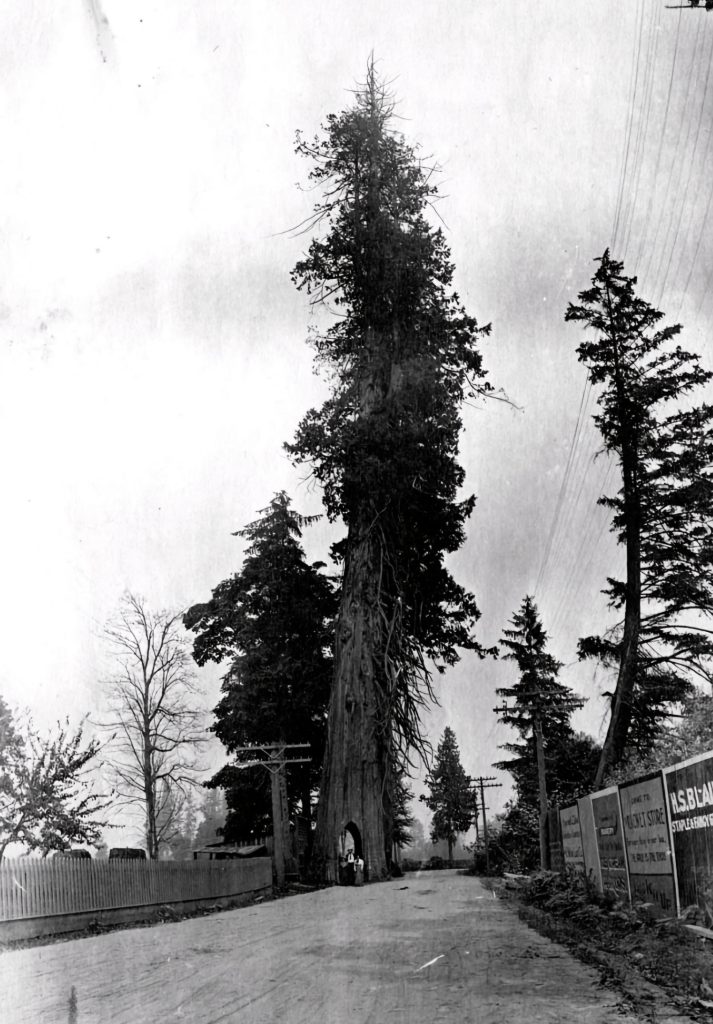
The tree would even outlive its generous benefactors, with Paramore passing in 1921 and Johnson in 1924, but tragically not by very long. The final and fatal blow for the Snohomish Bicycle Tree would come on a fateful afternoon on December 2, 1927. Rising floodwaters from the Snohomish River, already wreaking havoc on surrounding farms and the road, breached the tree. The relentless water, coupled with a strong gust of wind, proved too much for the already compromised root system. With a mighty crash, the Snohomish Bicycle Tree toppled over, leaving behind a crater in the paved road and a community in mourning.
The Snohomish Community Remembers its Fallen Giant
The fall of the Snohomish Bicycle Tree made headlines in the local newspapers. The “Everett Morning Tribune” even dedicated a front-page story to the event as early as the next day after its demise. Highway crews arrived swiftly, and within hours, the once-majestic landmark was reduced to nothing but firewood and sawdust despite having escaped early Northwest loggers just mere decades before.
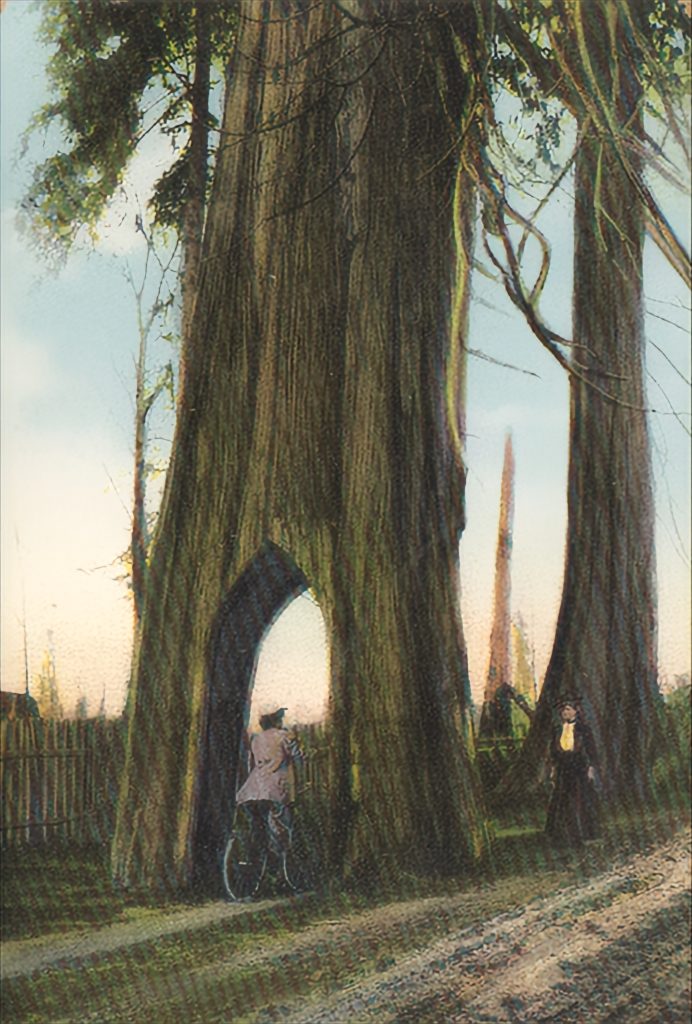
Following the original’s downfall, news also started circulating throughout Snohomish, with rumors of a tree much larger than that of the Bicycle Tree possibly being hollowed out as a replacement. A second cedar across the road to the east was eventually altered, keeping the attraction of what was once alive for several more years, but eventually, it too would succumb to the elements. And though the Snohomish Bicycle Tree may be gone, its story serves as a poignant reminder of the passage of time and the experiences that have shaped the Snohomish community.


